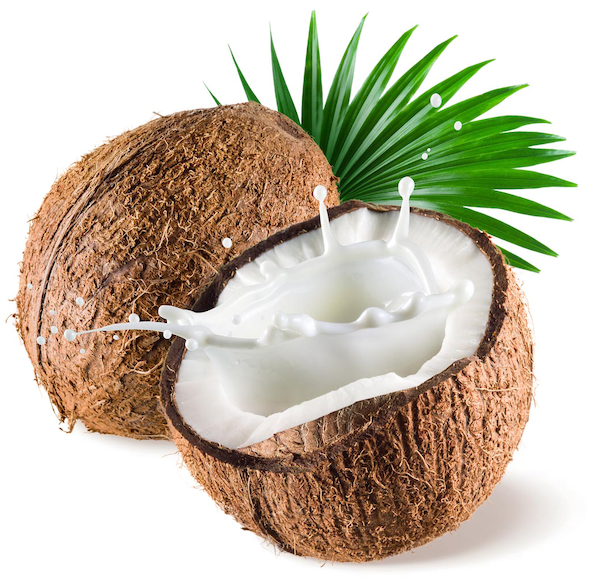Cheap Eats:
Aba Curriya
Ceylon—renamed the Republic of Sri Lanka in 1972—has a continuous recorded history of more than 2,000 years of civilization. Though the culture of this island off India's coast has been influenced somewhat by the subcontinent that is its neighbor, Ceylon developed a distinctive identity. The Sinhalese, the island's oldest settlers, have a language that exists only in Ceylon. (Tamils, relative newcomers and the other of the island's two major ethnic groups, probably immigrated from India in the 5th century BC)
Probably the most significant factor in determining the course of Ceylon's history was its position along a major east-west sea route. Greek and Roman cartographers and sailors knew of Ceylon. Later, Persian, Armenian, and Arab navigators and merchants noted its importance as the crossroads of Eastern and Western trade.

Coconut grew well and easily in Ceylon, especially along the coast and in the highlands, and was an important food crop for the locals. But it was the forests of spice trees that eventually drew foreign traders into the country's ports. For a considerable portion of the world's history, Arabs were the major international traders, and their interest in Ceylon dates from the 10th century. The king of Ceylon owned most of the land, so the increase in trade didn't really help anyone except him, but trade he did. Cinnamon, pepper, and other spices were bringing high prices in the West, demand was increasing, and Arab traders were poised to meet that demand.
More recently, the Portuguese spent time in Ceylon, but did little other than trade and make enemies. The Dutch moved in next, with greater diplomacy, and turned the cinnamon trade in particular into a really lucrative business. Finally, at the end of the 1700s, the British arrived. Their primary interest was in Ceylon's strategic importance, as the British continued their ongoing battle with the French. British rule had the greatest impact on Ceylon of all the European "visitors," and especially benefited the commoners. While trying to meddle as little as possible in traditions and religion, the British none the less made reforms, abolishing slavery, paying salaries in cash, relaxing the system of compulsory service, and generally making things more republican all around. They also abolished state monopolies and encouraged entrepreneurship, both by selling Crown land cheaply to local growers and by introducing coffee and tea.
Of the two beverage crops, tea proved to be the more important. Coffee was destroyed by disease in the 1870s, and by the 1880s, tea was gaining ground as the crop of choice. Before long, the name Ceylon became almost synonymous with tea worldwide, and tea surpassed cinnamon as the island's major cash crop. The British then began encouraging the development of rubber plantations, and these, too, prospered.
The British did not stay forever. By 1947, Ceylon was independent and holding its first elections. (First ever, since Ceylon had an absolute monarchy before the British arrived.) Today, as Sri Lanka, the island still trades with the world: primarily tea, coconut, and rubber, though they still ship about 5,000 metric tons of spice a year, too.
The Sri Lankan recipe below uses few of the island's famous spices, but it does use coconut milk. My friend, Iromie, tells me that, growing up in Sri Lanka, she learned how to make coconut milk, grating and pressing the coconut meat to extract the thick, rich liquid. However, when she first came to the U.S., coconuts were not so easily found, so she switched to regular milk for her recipes. Now you can buy cans of coconut milk in the Asian foods section of most grocery stores, but Iromie is still using milk—she says that at first she missed the creamier texture and richer flavor, but milk is so much lower in fat than coconut milk, that she can't imagine going back.
I haven't made this recipe with milk, yet, but imagine that the flavor, at least, shouldn't be drastically altered—the seasoning is just too heavy for the difference to be that noticeable. The sauce would just be a little thinner. So if you gasp when you read the nutrition facts on the side of that can of coconut milk, now you know you have an alternative.

Iromie says that any time you see the word aba, you know there will be mustard in the dish, since this is the Sinhalese word for mustard. The following recipe lives up to its name.
Aba Curriya
1 pound skinless fish fillets
1 large onion, chopped
2 Tbs. vegetable oil
1 Tbs. dry mustard (Coleman's prepared English mustard)
2 tsp. chili powder
1 bay leaf
1 tsp. salt
1 Tbs. Worcestershire sauce
2 tsp. sugar
1 cup coconut milk
2 Tbs. vinegar
If you are using fresh fish, put it in lightly salted water, bring to boil, and cook for 5 minutes. Then drain. If you are using frozen fillets, follow package directions, or thaw and cook as above. (Recommended fish would be those with relatively firm flesh and milder flavor, though you could experiment.) Set aside.
Sauté the onion in oil, stirring occasionally, until yellow.
Stir in mustard, chili powder, bay leaf, salt, Worcestershire sauce,
and sugar and let simmer for one minute. Add coconut milk and stir
until sauce is smooth. Reduce heat and slowly stir in vinegar. Break
fish into large pieces, stir into the sauce, and heat through.
Serves 4.
You might want to serve this with white rice and a cup of (what else) Ceylon tea.

